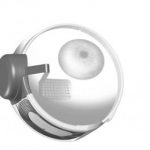 The last year or so has seen a number of interesting projects emerge that utilize AI to help us detect problems with our eyes. For instance, the California Healthcare Foundation (CHCF), are using machine learning to better spot diabetic retinopathy, which is a complication in diabetics caused by damage to blood vessels that supply the retina.
The last year or so has seen a number of interesting projects emerge that utilize AI to help us detect problems with our eyes. For instance, the California Healthcare Foundation (CHCF), are using machine learning to better spot diabetic retinopathy, which is a complication in diabetics caused by damage to blood vessels that supply the retina.
If it’s untreated it can lead to blindness, and is common in up to 80% of diabetics. This damage can usually be treated by laser, drugs or surgery, providing it is caught early on.
Microsoft have undertaken a similar project in India in partnership with the LV Prasad Eye Institute (LVPEI). The pair have been working together to utilize artificial intelligence in the analysis of patients coming to LVPEI for eye surgery. Microsoft researchers examined 1.1 million data files to explore just how blindness spreads throughout the country.
Google are also working on similar projects, and reserchers have developed an algorithm for scanning our eyes in order to better spot a particularly common form of blindness.
The project follows a familiar path, feeding the algorithm a bunch of medical images of the retina to train it to look for diabetic retinopathy, which is a condition believed to affect around 1/3 of diabetes patients.
The condition is caused by blood vessels in the eye becoming damaged, which sees the vision of the sufferer deteriorate. As with so many conditions, early detection can see it successfully treated.
Hardware support
Of course, whilst these projects are working on early detection, there is also a great deal being done to improve the condition of those already with the disease. Patients at the Manchester Royal Eye Hospital and Moorfields Eye Hospital in London have been given implants to help them overcome a condition known as retinitis pigmentosa.
Each patient will be allocated a pair of glasses that come with a camera that will capture light and also send wireless signals to an implant located inside the retina. This implant will then communicate with the brain, and help the patients to regain their sight.
“I’m delighted that our pioneering research has provided the evidence to support NHS England’s decision to fund the bionic eye for the first time for patients.
“It surpassed all of our expectations when we realised that one of the retinitis pigmentosa patients in Manchester using the bionic eye could identify large letters for the first time in his adult life,” the researchers say.
Patients will use the system, which is developed by Second Sight, for one year to see just how much of an improvement they see. It’s a fascinating project that joins the numerous other ventures to make real improvements in the way we treat the blind. Check out the video below to see more about the implants.
If I could trade my eyes for robot eyes and my ears for robot ears I would do it so fast.
As the tech advances and begins to get more reliable and cheaper, people wanting to swap perfectly healthy body parts for synthetic ones will be one of the next great social debates.
Deus Ex was right on the money
My mom and brother both suffer from retinitis pigmentosa – it's really exciting that research is being done to help them to see again! I hope this comes to Canada soon!
I want to see gamma rays, I want to hear X-rays, and I want to smell dark matter.
Very cool technology, seems in just a few years these people will see about as well as people that need glasses that aren't wearing them. Soon after that, probably will be able to see better (or more) in certain ways relative to people with good eyesight.